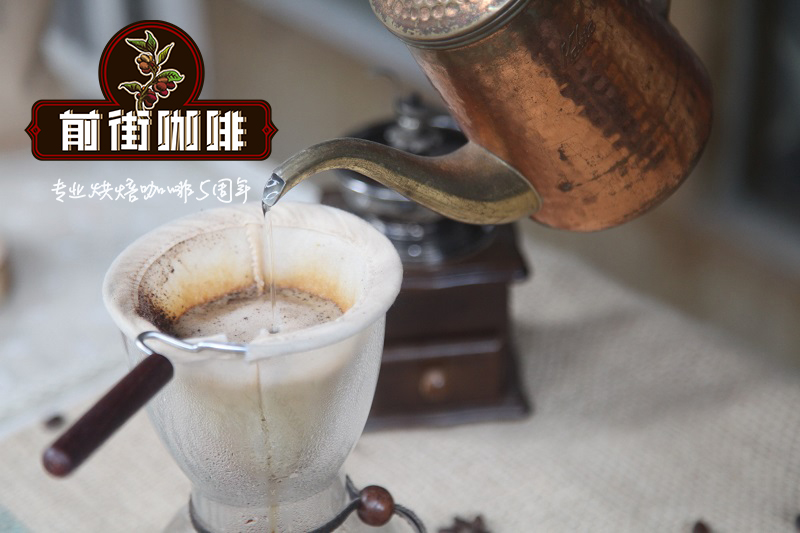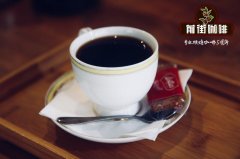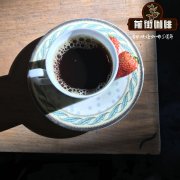Columbia Huilan Magdalena Coffee hand share _ how to make Colombian Coffee Coffee

Professional coffee knowledge exchange more coffee bean information please follow the coffee workshop (Wechat official account cafe_style)
Columbia Coffee (Cafe de Colombia) is one of the few individual coffees sold under the name of a country in the world, and it is also a successful example of the successful combination of geographical indications and brand image.
In December 2004, the Colombian Coffee producers Association (FNC) applied to the Government of Colombia for registration of the geographical indication "Caf é de Colombia" (Colombian Coffee). Three months later, the Colombian government approved "Caf é de Colombia" as the "appellation of origin-geographical indication (D.O.-G.I.)". As a result, this logo has also become the official symbol of the Colombian Coffee producers Association.
Not only that, it has also won praise unmatched by other coffee in terms of quality. Compared with other producing countries, Colombia is more concerned with developing products and promoting production. It is this, coupled with its superior geographical and climatic conditions, that makes Colombian coffee excellent in quality and delicious and famous all over the world.
Colombian coffee is located in the Andes, where the mild climate, humid air and good rainfall make it very suitable for coffee growth. according to its geographical location, Colombian coffee is divided into three producing areas: northern, central and southern, in which there are six high-quality coffee producing areas in Colombia, Sierra Nevada, Santander, Cauca, Huila, Nari ñ o and Paisaje cultural cafetero.
The northern Sierra Nevada producing area is one of the high quality producing areas in Colombia, and the Santa Marta Snow Mountains is one of the few snowy mountains on the equator, and its caffeine is famous for its distinctive characteristics and high quality standards. The unique climate, abundant precipitation, cloud cover and shade planting make the coffee here full-bodied and nutty, giving people a unique sensory experience.
The north-central Santander producing area consists of two major geographical areas: the Magdalena Basin and the mountains of the eastern mountains. The Magdalena basin is relatively flat, with a dry and hot climate in the central plain. The eastern mountain range has rugged terrain, steep slopes and an altitude of 4000 meters. The climate is affected by different elevations, which makes it show a variety of meteorological zones, resulting in a rich aroma of coffee and moderate acidity. Smooth and consistent with tobacco flavor
Huila is located in southern Colombia, one of the well-known specialty coffee producing areas, with an altitude of about 1200 to 2020 meters, a planting area of more than 1.3 million hectares and an average temperature of 17 to 23 °C. Because of its outstanding flavor and aroma, it has become a world-famous special coffee. Medium acidity and moderately mellow, with charming sweetness and lemon wine acid, a balanced and pure aftertaste, it is often selected by major coffee competitions in recent years.
In the Vera region of Columbia, the two Andean Cordillera Mountains, which begin with the Magdalena River in Rio de Janeiro, have warm air masses blowing from the upper reaches of the Caribbean, creating a special climate conducive to the growth of coffee. The growers worked hard and bravely to cultivate a small steep hillside in this remote and rugged area. We salute their dedication and thank them for bringing us this elegant coffee characterized by apple acidity and milk chocolate tail.
How to make Colombian coffee [Whelan Magdalena] well?
Qianjie Coffee hand reference: weigh 15g [Cymbidium Magdalena] coffee powder, pour into the grinder for medium grinding, the finished particles are slightly thicker than salt, we use BG bean grinder to scale 5R (standard sieve pass rate 60%), water temperature 89 degrees, V60 filter cup extraction, recommended powder ratio around 1:15.
The hot water in the hand flushing pot draws a circle clockwise with the center of the filter cup. Start the time when brewing, brew the coffee to 30g in 15 seconds, then stop the water injection, and when the time is up to 1 minute, the second water injection. The second water injection is the same as before, draw a circle clockwise with the center of the filter cup, and the water flow should not rush to the place where the coffee powder is connected with the filter paper, so as not to produce channel effect.
Coffee powder to the outermost circle to set aside a circle, and then another circle to the middle, 2 minutes 20 seconds, to the coffee to 220g, brewing coffee is finished.
| Japanese ice hand punch [Huilan Magdalena]
Qianjie Coffee Ice hand [Huilan Magdalena] reference:
Colombian coffee [Whelan Magdalena], light medium baking, BG bean grinder scale 5m (standard sieve pass rate 67%)
20 grams of powder, 150 grams of ice, 150 grams of hot water. The water temperature is 90 ℃ higher than the recommended normal hand flush, then 1 ℃ higher, the normal grinding small Fuji 3.5 scale, the ice hand flushing is slightly smaller than half a grid-small Fuji 3 scale, the recommended powder (water + ice) ratio is 1:15.
The amount of steaming water is 40 grams and the steaming time is 30 seconds.
Water injection by stages, 60 grams of water in the first section and 40 grams of water in the second section. Use a thin but high water injection column and stir hard to make the coffee powder fully tumble, but be careful that the water level is not too high and do not rush to the edge of the filter paper.
The whole extraction time is about two and a half minutes (close to the normal extraction time of 20 grams of powder).
END
Important Notice :
前街咖啡 FrontStreet Coffee has moved to new addredd:
FrontStreet Coffee Address: 315,Donghua East Road,GuangZhou
Tel:020 38364473
- Prev

Western Costa Rica Valley | Laura / Yelsa processing plant Helsar White Honey Kaddura flavor?
Professional coffee knowledge exchange more coffee bean information please follow the coffee workshop (Wechat official account cafe_style) Costa Rica western valley | Laura / Yelsa processing plant Helsar White Honey Kaddura flavor? Yelsa processing plant is one of the first micro-processing plants to be introduced to Taiwan since the revolution of micro-processing plants in Costa rica. it appeared on the market in 2007.
- Next

Is Peet's Columbia Xiguang Coffee good? hand-made Columbia Xiguang Coffee Bean parameters sharing
Professional coffee knowledge exchange more coffee bean information please follow the coffee workshop (Wechat official account cafe_style) this is Colombia and Ethiopia proportionally allocated coffee beans, as far as I drink, Colombian taste dominated, sour not as sour as Colombian single, but retained the Ethiopian astringent taste, this cup is more like fruit than immature fruit
Related
- Detailed explanation of Jadeite planting Land in Panamanian Jadeite Manor introduction to the grading system of Jadeite competitive bidding, Red bid, Green bid and Rose Summer
- Story of Coffee planting in Brenka region of Costa Rica Stonehenge Manor anaerobic heavy honey treatment of flavor mouth
- What's on the barrel of Blue Mountain Coffee beans?
- Can American coffee also pull flowers? How to use hot American style to pull out a good-looking pattern?
- Can you make a cold extract with coffee beans? What is the right proportion for cold-extracted coffee formula?
- Indonesian PWN Gold Mandrine Coffee Origin Features Flavor How to Chong? Mandolin coffee is American.
- A brief introduction to the flavor characteristics of Brazilian yellow bourbon coffee beans
- What is the effect of different water quality on the flavor of cold-extracted coffee? What kind of water is best for brewing coffee?
- Why do you think of Rose Summer whenever you mention Panamanian coffee?
- Introduction to the characteristics of authentic blue mountain coffee bean producing areas? What is the CIB Coffee Authority in Jamaica?

